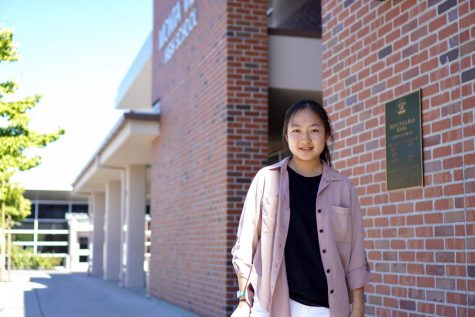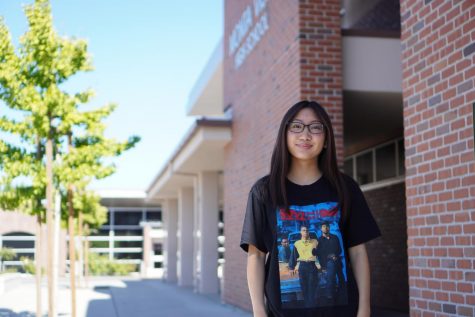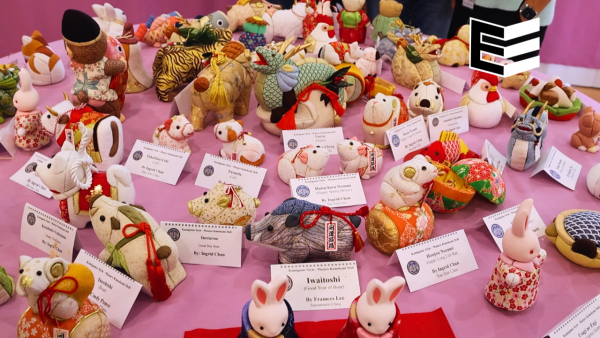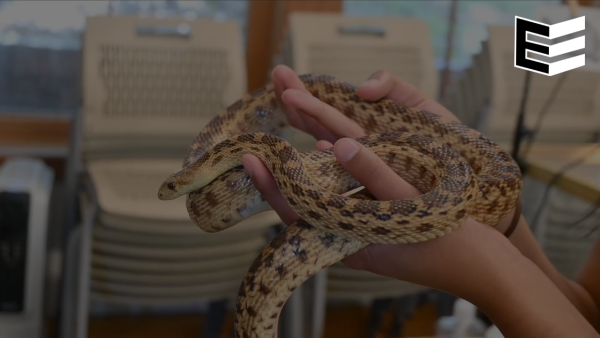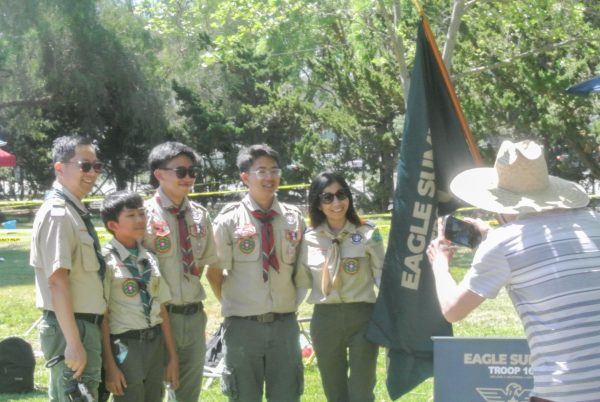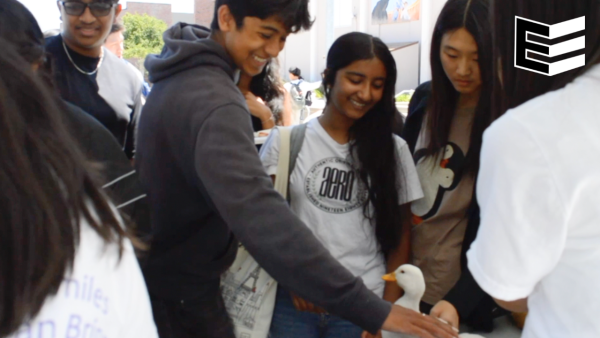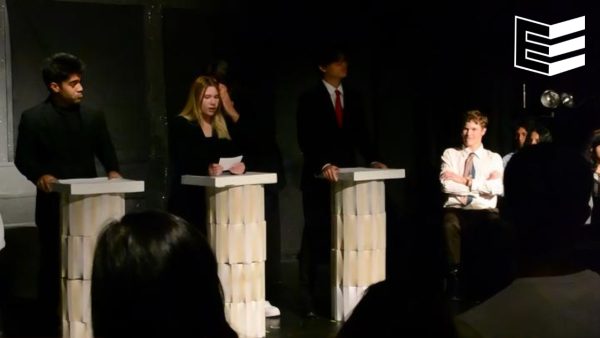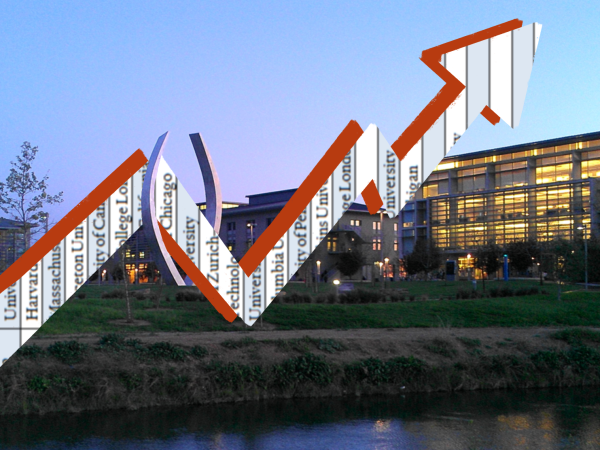Cupertino Historical Society and Museum starts new project: Cupertino Speaks
City residents analyze the importance of documenting the history of COVID-19 in their community
Photo used with permission of Jennifer Furlong
Cupertino Historical Society and Museum initiates project: Cupertino Speaks to document the cultural changes of the city
The Cupertino Historical Society and Museum announced a new call for photos, videos and other artwork media, via their Facebook page, as part of their new project responding to COVID-19 called Cupertino Speaks, released on April 23. Works submitted will be reviewed and potentially used for future display.
The museum has stored donated artifacts, documents and photos related to the history of Cupertino in the Quinlan Center. According to executive director of the organization Jennifer Furlong, the organization was originally established in 1966 when a group of Cupertino residents grouped together to form the organization after feeling worried that the city’s history would be forgotten following many years without documentation. Forward to today, employees who work for the museum continue to maintain and preserve history as Cupertino is caught in the COVID-19 wave.
When COVID-19 started to spread to Cupertino, Furlong and president Sharon Blaine noticed large shifts in the community’s way of life –– families have volunteered to make and donate masks, neighbors are helping each other deliver food and services, writers are sharing poems and diaries of their days of isolation. Immediately, their organization met and initiated a new project: Cupertino Speaks.
“What a historically significant period of time this is,” Furlong said. “[We’ve been] trying to think of a way to involve the community in documenting their experience that didn’t involve person-to-person contact, so that we could still be safe –– where people could tell their stories and provide a venue for future scholars [and] for future community members.”
Like Furlong, Blaine believes that Cupertino Speaks will provide an easy and safe way to document life during the pandemic. Blaine says that this project will also educate residents that they must have resilience and adaptation to the situation.
“One of the greatest things that we can learn from our past [is] that people have gone through these experiences and come out the other side [which] brings a sense of hope that everything will be okay,” Blaine said. “I think that people realize that they can be flexible; they can change and look for the good parts of an experience. I think it’s going to be very interesting to see how we all change. And I’ve already changed my outlook on things.”
According to Blaine and Furlong, other cities have also recently taken the challenge to document their own COVID-19 experiences, which begs the question of how Cupertino is different from those cities.
Despite having similar geographical features and culture, Furlong and Blaine both agree that Cupertino is one of the most diverse communities in the South Bay, which lets Cupertino represent different cultures. Thus, they feel that it is significant to document these individuals.
“Cupertino is a really unique community in its demographic makeup and industry,” Furlong said. “There’s no better voice for us than our citizens … The multicultural nature of Cupertino is fascinating. Cupertino is just [a] fascinating place in terms of modern immigration and [has] a community that really embodies the best of the American spirit. I would love to be able to have voices heard that, historically, we haven’t heard from.”
With experience as a journalist, Cupertino resident Maria Svemark wanted to contribute to the Cupertino Speaks project by posting her personal journals on Facebook, educating her audience on the importance of sheltering in place, as Sweden, her home country, has adopted the “herd immunity” approach rather than social distancing since there were few cases in the area.
“I could also feel that there was a need in Sweden to know what was ahead of them, and [that] they have, of course, a totally different approach to the pandemic,” Svemark said. “I’m a person who if life gives you lemons you make lemonade, use the language you have to the best of it.”
Svemark’s journal gained popularity on Facebook as many people left comments under her posts and decided to submit her journals to Cupertino Speaks, finding out about the project online.
While people like Svemark submit their works for the project to educate future audiences, MVHS parent Linda Leeg decided to submit their works to express personal emotions and opinions. According to Furlong, these works may be a way for individuals like Leeg to vent out their feelings using imagination and creativity. For example, she recently wrote a poem titled “Silver Lining in Dark Viral Clouds.” The poem highlighted the negative and positive aspects of the pandemic and offered comfort and consolation for those who feel troubled during isolation.
“People started thinking of new ways to relate to each other and to come up with ideas to help each other,” Leeg said. “And I guess it was just the spirit that I [was] trying to write about; the spirit that really can’t be dampened. Even though all of our doors are closed, people behind those closed doors [are] generating a lot of goodwill toward others and trying to keep their own spirits up and just not being intimidated or easily diminished by the limitations of the global pandemic.”

Blaine adds that having insight into the different ways individuals deal with COVID-19 will prepare later generations.
“I’ve lived long enough to have experienced a few other pandemics,” Blaine said. “I was a teacher at one time. In 1957, we had another viral pandemic. And I remember, out of my class of 35 students, there were 16 that could come to school. Now you get your flu vaccine … We didn’t have the privilege [of knowing who had the virus] unless you knew somebody that was sick. We didn’t really know how to protect ourselves… There was some information in the newspapers and on the radio and television; that’s all we had. Now we have a flu vaccine that protects us from that virus among others. And I think knowing now how we cope with things makes it easier for the next time.”
Blaine and Furlong said that Cupertino Speaks will also document the shifts in routines that individuals must do every day, making these submissions important primary sources that describe how these changes occurred. According to Blaine, as the shelter-in-place order causes many residents to stay at home with the exception of exercise and grocery shopping, individuals are using the internet more often than before, which causes more to rely on technology.
“I don’t think we’re ever going to go back to the way we were or do things before 2020,” Blaine said. “I think there is going to be a big change [for] greater use of the internet and doing things online. We saw this happening with the retail business, but I think we’re going to see it happening with a lot more businesses. A lot more activities are going to be done online. People are used to it right now.”
Along with the cultural changes happening in Cupertino, Leeg mentions that she can see a sudden increase in wildlife appearing around the city and wanted to capture environmental and natural life while people were at home. Inspired by the nature around her, she wanted to write about it in her poem.
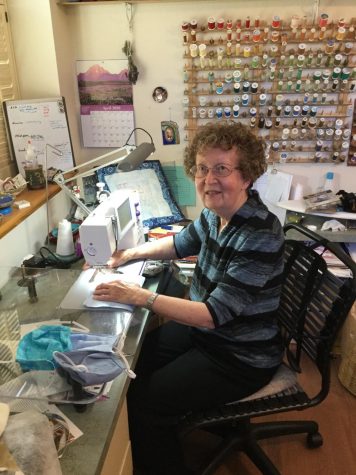
“I really like to play around with words and look at different ways of expressing myself, playing around with words and just putting a whimsical spin on things,” Leeg said. “And I just saw that I could do that with my words. I could kind of play around a little bit and [it] may be amusing or in some way, it wasn’t meant to be any life-changing words of any kind, but just more [of a way] to make people smile; maybe it’s a little diversion.”
According to Furlong, these submissions are considered primary sources –– they are a way for people to learn about families in the past through unique records, imagery and emotions that can not be felt by anyone else. Furlong thinks that the emotions captured in these submissions often cannot be experienced in a regular newspaper or article, which makes them priceless.
Looking into the future, Furlong thinks that people of future generations will be surprised by the cultural, social and economic changes that happened in Cupertino. Overall, she, Blaine, Svemark and Leeg hope to educate others about Cupertino during COVID-19 through the museum so they can learn how to handle future pandemics as well as feeling the emotional accounts of individuals living at the time.
“This is a time that we will all look back on and our reflections will hopefully trigger something in ourselves that helps us gain strength to remember how we got through [the pandemic],” Leeg said. “[This] puts a broader tone to it all by showing that it was a serious [time], but it was also a time when you could see the lightheartedness and the silver lining.”
Click here to learn about the Cupertino Historical Society and Museum and click here to submit any “artifacts.”
